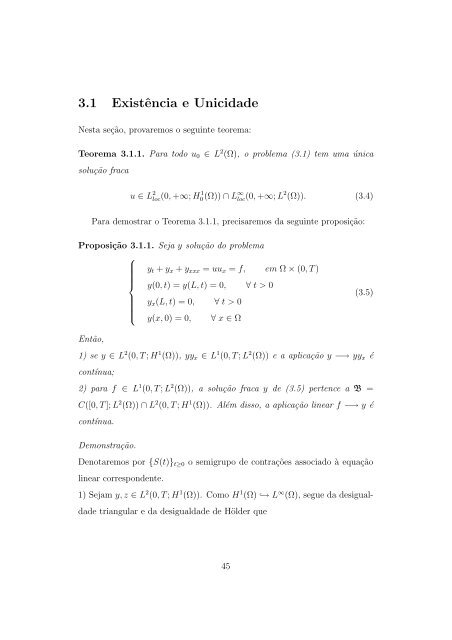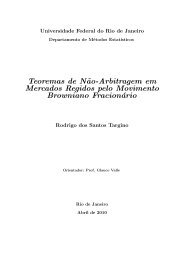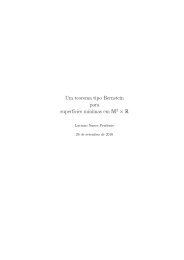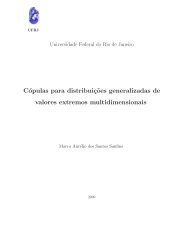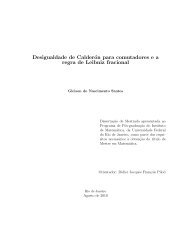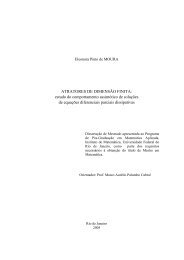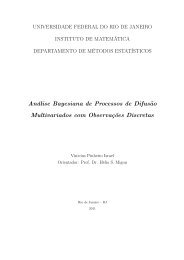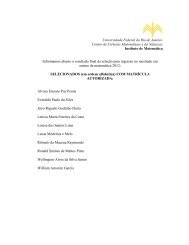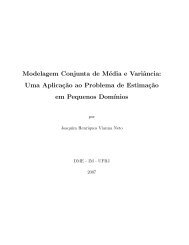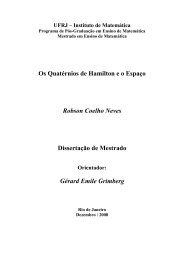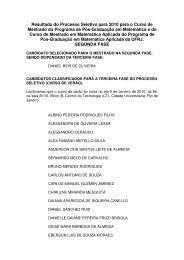Existência, Unicidade e Decaimento Exponencial das Soluç ... - UFRJ
Existência, Unicidade e Decaimento Exponencial das Soluç ... - UFRJ
Existência, Unicidade e Decaimento Exponencial das Soluç ... - UFRJ
Create successful ePaper yourself
Turn your PDF publications into a flip-book with our unique Google optimized e-Paper software.
3.1 Existência e <strong>Unicidade</strong><br />
Nesta seção, provaremos o seguinte teorema:<br />
Teorema 3.1.1. Para todo u 0 ∈ L 2 (Ω), o problema (3.1) tem uma única<br />
solução fraca<br />
u ∈ L 2 loc(0, +∞; H0(Ω)) 1 ∩ L ∞ loc(0, +∞; L 2 (Ω)). (3.4)<br />
Para demostrar o Teorema 3.1.1, precisaremos da seguinte proposição:<br />
Proposição 3.1.1. Seja y solução do problema<br />
⎧<br />
y t + y x + y xxx = uu x = f, em Ω × (0, T )<br />
⎪⎨ y(0, t) = y(L, t) = 0, ∀ t > 0<br />
y x (L, t) = 0, ∀ t > 0<br />
⎪⎩ y(x, 0) = 0, ∀ x ∈ Ω<br />
(3.5)<br />
Então,<br />
1) se y ∈ L 2 (0, T ; H 1 (Ω)), yy x ∈ L 1 (0, T ; L 2 (Ω)) e a aplicação y −→ yy x é<br />
contínua;<br />
2) para f ∈ L 1 (0, T ; L 2 (Ω)), a solução fraca y de (3.5) pertence a B =<br />
C([0, T ]; L 2 (Ω)) ∩ L 2 (0, T ; H 1 (Ω)). Além disso, a aplicação linear f −→ y é<br />
contínua.<br />
Demonstração.<br />
Denotaremos por {S(t)} t≥0 o semigrupo de contrações associado à equação<br />
linear correspondente.<br />
1) Sejam y, z ∈ L 2 (0, T ; H 1 (Ω)). Como H 1 (Ω) ↩→ L ∞ (Ω), segue da desigualdade<br />
triangular e da desigualdade de Hölder que<br />
45


